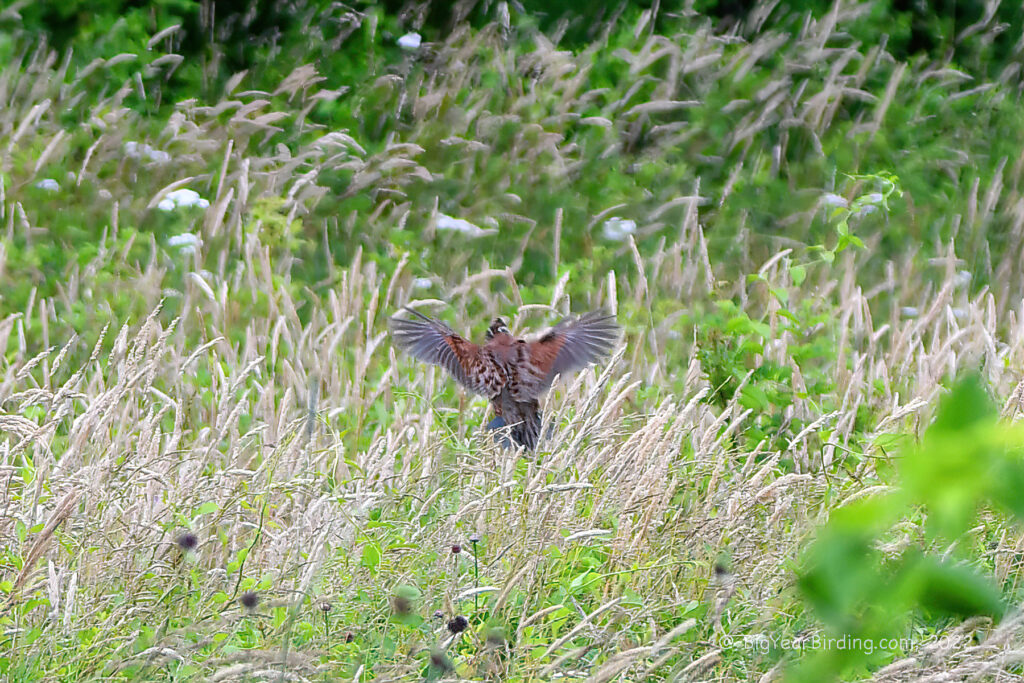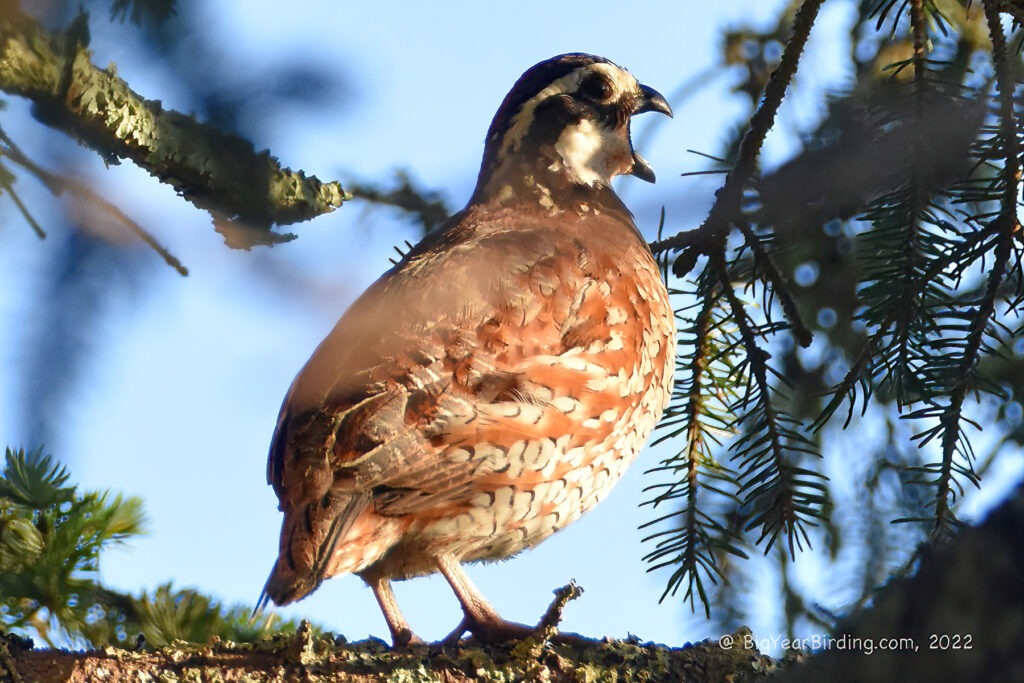The Northern Bobwhite, also known as the Virginia Quail, is a small, ground-dwelling bird that is commonly found throughout the eastern United States. Measuring around 9-10 inches in length and weighing between 5-6 ounces, the Northern Bobwhite is a relatively small bird with a distinctive plump body and a short, rounded tail.

One of the most distinguishing field marks of the Northern Bobwhite is its striking black and white head pattern, which features a black stripe running down the top of the head and a white throat and eyebrow stripe. The bird’s chest and sides are a reddish-brown color, and its back and wings are mottled with a combination of black, brown, and white feathers.
Unlike many other bird species, the Northern Bobwhite is a non-migratory bird that remains in its breeding range throughout the year. These birds are typically found in open fields, grasslands, and agricultural areas, and they are often seen in small groups or pairs. They are also known for their distinctive “bob-white” call, which can be heard throughout their range.
The Northern Bobwhite is a popular game bird and is often hunted for sport. This has led to declines in some populations, particularly in areas where hunting pressure is high. In addition to hunting pressure, the Northern Bobwhite has also been negatively impacted by habitat loss and fragmentation. Despite these threats, conservation efforts are underway to help protect and restore populations of this iconic bird species.

Overall, the Northern Bobwhite is a beloved bird species that is known for its distinctive appearance, vocalizations, and behavior. While these birds face a number of threats, they remain an important part of the ecological landscape of the eastern United States and are a beloved species among birdwatchers and hunters alike.

